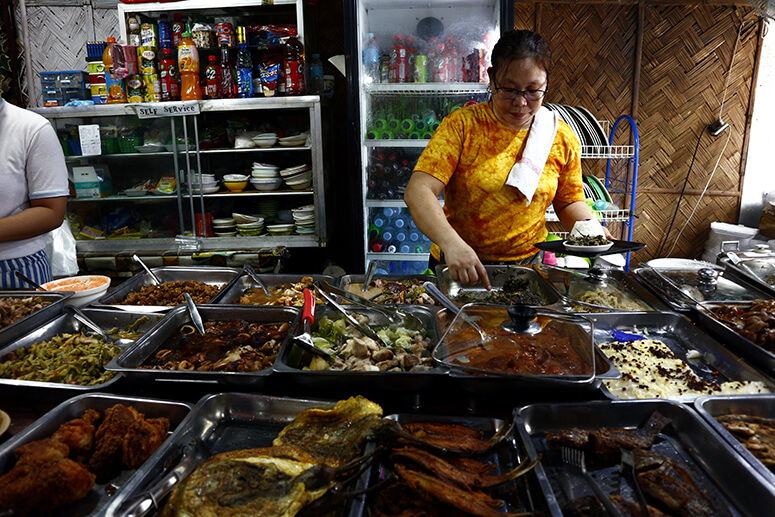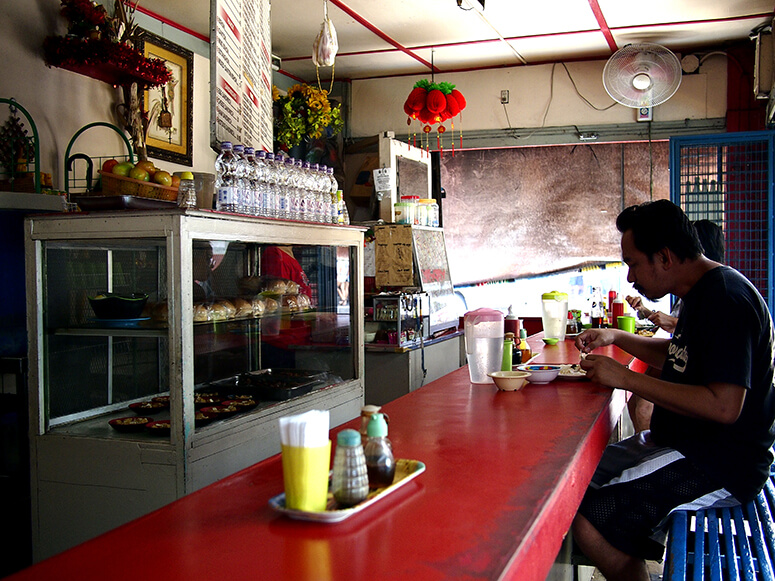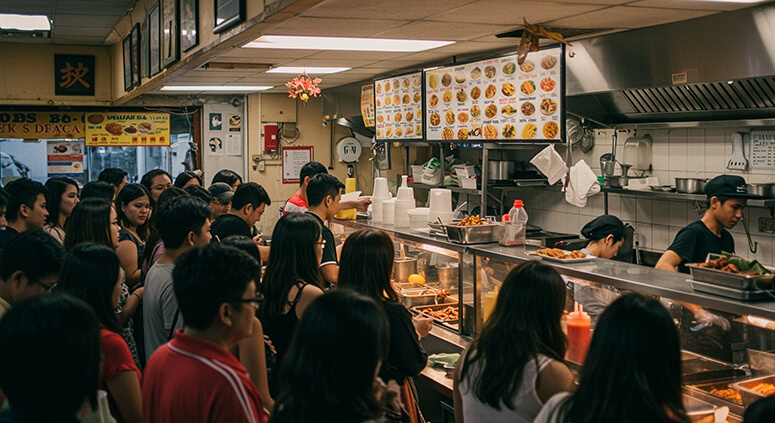To ‘karinderyas,’ where meals become memories
Living alone is not for the weak.
At first, it feels exhilarating because you can stay out late, make your own choices, and live life on your own terms. But reality hits hard when the excitement fades, and you’re left in an empty room with no one to share dinner with and the daunting realization that cooking three meals a day is an errand you don’t have the time (or energy) for.
For students who live alone, a karinderya becomes a warm embrace after a long day. These humble, hole-in-the-wall eateries serve not just food but home and comfort. They remind you of what your mom or lola would make once you get home, tired and sleepy from school. The aroma of sinigang na baboy, the sight of crispy fried lumpiang shanghai or tilapia, and the familiar sweetness of pork adobo bring an instant sense of home, even when you’re miles away from it.

I never truly appreciated the essence of a karinderya at first. They were just small eateries selling dishes I could technically make myself, if only I had spare time. But these places became my sanctuary during my six months of living alone in my final year of college. I was knee-deep in my solo thesis and barely had time to go back home on weekends to visit my family, let alone cook. And yet, the nearby karinderyas made sure I never went hungry. It was where I often went when I was too exhausted to function, where I found warmth when Manila’s chaos felt overwhelming, and where I could eat a meal that didn’t taste like takeout.
Each karinderya’s take on a dish is precisely rooted in personal experience, reflecting the owner’s history and upbringing. Yet somehow, no matter where you eat, it always feels familiar.
Back in college, my friends and I would take our lunch breaks at different food chains around P. Noval or Dapitan. Still, whenever we wanted something close to home, we resorted to local eateries, particularly the one at the back of our college building, Campus Cater. We liked ordering the same ulam like pork adobo, sisig, and sinigang sa bangus belly with extra garlic rice, which ranges from P89 to P119. We were almost there every day, to the point that the Kuya server greeted us when we passed by the place.

While waiting for our food, we’d always talk about how difficult and demanding it is to be an advertising arts major, laugh about each other’s kwentos, and joke about cutting classes right after we ate lunch. Today, it has become an unspoken rule to eat at this particular karinderya whenever we visit the campus, as if revisiting our college memories. I remember eating in this exact place while being anxious about whether I passed a major subject.
As I lived in Mandaluyong during my thesis year, the best karinderyas were scattered around the area, especially in the different corners around Rizal Technological University. These spots had everything I needed: fast service and affordable meals like silogs and even tokwa’t baboy and lugaw if I didn’t have an appetite. After graduating, I still ate in our favorite eatery and even brought my younger brother to taste what it felt like to be a college student, at least for me.

It was more than the food. I valued the shared experience, all the kwentos, the laughter, and the feeling of belonging.
The funny thing about karinderyas is that they all sell the same dishes, yet each carries a unique taste. It's like every household has a way of cooking adobo: some make it sweet, some extra garlicky, and some are even dried. Each karinderya’s take on a dish is precisely rooted in personal experience, reflecting the owner’s history and upbringing. Yet somehow, no matter where you eat, it always feels familiar. It’s home-cooked, even if it's not your own home.
Even though I’m no longer a student, my favorite karinderyas are still part of my everyday life. Time flies quickly, but it doesn’t change the food and places we grew up in. It brings back memories and, at the same time, creates more for us to return to whenever we find ourselves lonely while eating alone.
They prove that even in the most unfamiliar places, living alone or with friends, a sense of home can still and always be found, one warm meal at a time.


